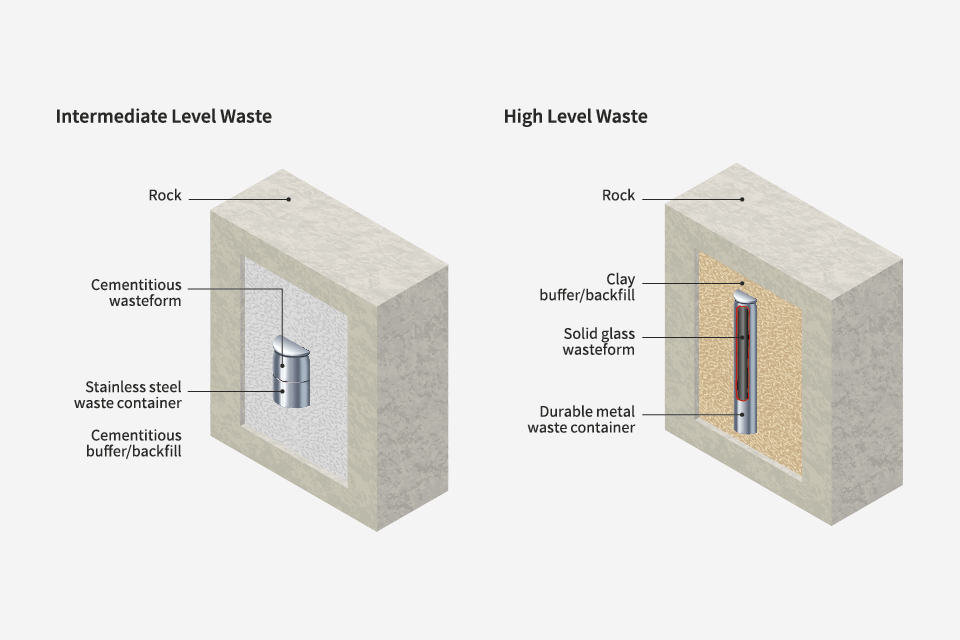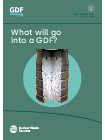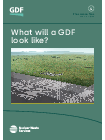Why underground?
Managing radioactive waste with geological disposal
There is international consensus that the safest permanent solution to manage higher activity radioactive waste is geological disposal, which involves putting the waste in a Geological Disposal Facility (GDF) beneath several hundred metres of solid rock.
This is already the chosen approach in countries including Canada, Finland, France, Sweden and Switzerland. Some of these countries are well on the way to developing their own GDFs.

A Geological Disposal Facility (GDF)
How does geological disposal work?
Geological disposal is possible thanks to world-class engineering, science and technology. This involves:
- isolating the radioactive waste in sealed vaults and tunnels deep underground, between 200 m and 1000 m below the surface
- containing the radioactivity while it decays naturally over time
- preventing radioactivity from ever reaching the surface in levels that could cause harm
Solid radioactive waste is packaged in secure engineered containers, typically made of metal or concrete, and then placed in a stable rock formation hundreds of metres below the surface, with the containers surrounded by clay or cement. This is called the multi-barrier approach.

The multi-barrier concept
In addition, a GDF:
- requires no ongoing maintenance
- is less vulnerable than surface storage to human activities such as terrorism or war
- is less vulnerable than surface storage to natural processes such as climate change
Watch our video that shows how a GDF will be implemented.
Welcome to the future of geological disposal
After the waste has been placed into a GDF, deep underground and away from people and the environment, it will eventually be permanently sealed to provide safety without the need for further action.
The safest solution
Why is a GDF a permanent solution?
Safety is our absolute priority. When constructing a Geological Disposal Facility we are working to keep the risk arising from the GDF directly above ground to a lower than one in a million chance of people developing health problems at any time in the future. (Source: Environment Agency’s Guidance on Requirements for Authorisation of Geological Disposal, 2009
Alternatives to geological disposal have been carefully considered and we continue to keep options under review. At present, they are all either not technically achievable (for example: converting the waste to non-radioactive material), not environmentally safe (for example: disposal at sea or in ice sheets), or too dangerous to implement (for example: firing the waste into space on rockets).

Unsuitable waste disposal methods
Next steps
We are looking for a suitable site to implement geological disposal safely, with a willing community who will work in partnership with us, as part of an agreed vision for the future.
Planning for geological disposal will take between 15 to 20 years. Independent regulators will ensure that all processes have been followed to their satisfaction. Only then can construction start.
If you would like to receive email notification of updates to these pages, please sign up to our e-bulletin service
Got a question?
If you have any questions our scientists and engineers are on hand to answer any technical queries you may have. Please email us at [email protected]
To understand in more detail what will go into a GDF, what it will look like and what the multi-barrier approach is, please read more in the downloadable science files below.


